Dr. Diane Counce presents experience with long COVID
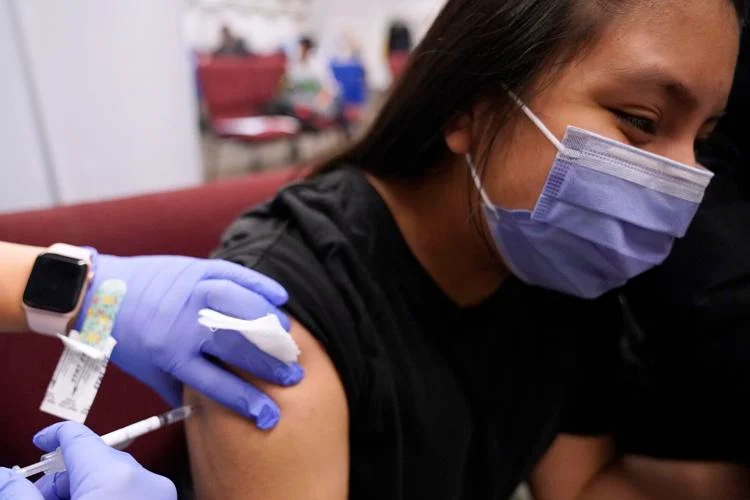
On Tuesday, Dr. Diane Counce spoke at the Mountain Brook Public Library to the Over the Mountain Chapter of Alabama Eagle Forum about her experiences treating patients suffering from long COVID. Counce is a neurologist who practices in the Birmingham area. Dr. Counce said that she treats people who had a bout of COVID-19 and continued to show symptoms weeks and even months after the infection. She also treats people who believe their symptoms are due to the COVID-19 vaccine. “Unfortunately, we see a lot of neurological problems with both the virus and the vaccine,” Dr. Counce said. Counce explained that the spike protein in COVID-19 interacts with the ACE-2 receptors found in over 72 tissues in the body. It is a mRNA vaccine. With long COVID, “one in five or one in seven are still having symptoms 28 days later,” Counce said. “203 symptoms have been documented. The average long COVID patient has 56 symptoms over nine organ symptoms. 86% would relapse when physically or psychologically stressed.” “The Science Journal confirmed that vaccines are linked to autoimmune disorders,” Counce stated. Counce said that symptoms of long COVID can also include blood clotting and heart myopathy. “The German Ministry of Health has said that long vaccine injury is a real issue,” Counce said. “People are spending lots of money treating this,” Counce said. “Insurance won’t pay for it because they don’t believe in it.” “Pfizer, as of February 2021, knew,” Counce said, citing Pfizer’s own data that has since been made public. “Cardiac issues occur about 40 days after the vaccine,” Counce said. “Neurological symptoms can turn up 100 days later. One hundred ninety-five days is about the average for neurological symptoms to occur.” Counce explained that the spike protein can easily cross the blood-brain barrier through the bone marrow. Symptoms include malaise, lethargy, microclotting, and GI issues. Treatments include ivermectin, intermittent fasting, N-acetyl cysteine, Vitamin C, Vitamin D, MagTen, and a low histamine diet. Counce said that for patients with clotting issues, she has tried Eliquis + Plavix + aspirin, natokinase, serrapeptase, lumbrokinase, neprionol, and vascyzyme. Dr. Counce recommended a clean diet: no seed oil, no canola, and no processed foods. “On the length of time of treatment, we don’t know,” Counce said. There have been cases where the patients relapsed after treatments stopped. Counce said that common neurological symptoms of long-term COVID or vaccine injury include brain fog, Bell’s palsy, and cognitive impairment. “These people are showing up at my clinic that are as though they have had Parkinson’s for five years, and it has just shown up,” Counce said, Counce said that long-term COVID can bring on the onset of muscular sclerosis. Counce said that scans of some of her patient’s brains show a depletion of the grey matter and/or diffuse grey matter atrophy. Long Covid can also worsen the condition of dementia patients. Dr. Counce recommended Dr. Jordan Vaughn at Med-Health 280 and Dr. Stewart Tankersley if you have long COVID or may be suffering from a vaccine injury. Dr. Counce’s views are a minority opinion within the medical establishment. The Centers for Disease Control and Prevention (CDC) and the Alabama Department of Public Health still recommend that every person six months of age and older receive the COVID-19 vaccine and receive booster shots twice yearly. “The Advisory Committee of Immunization Practices has approved updated 2023-24 COVID-19 vaccines for all Americans 6 months and older who have not received a vaccine in the past two months,” ADPH wrote in a recent press release. “Vaccination remains the best protection against COVID-19-related hospitalization and death. Vaccination also reduces the chance of suffering the effects of Long COVID, which can develop during or following acute infection and last for an extended time. The updated mRNA vaccines are produced by Moderna and Pfizer-BioNTech. An updated Novavax vaccine has been authorized and should be available soon.” There are presently 14,863 known active COVID-19 cases in the state of Alabama. Since 2020, 21,138 Alabamians have died from COVID-19. 1,659,936 people in Alabama have contracted COVID-19. The actual number is likely higher as many people either had mild symptoms or suffered through it at home without seeking medical treatment. To connect with the author of this story or to comment, email brandonmreporter@gmail.com.
Lawmakers advance hospital visitation protections

Alabama lawmakers on Thursday advanced legislation requiring hospitals and nursing homes to allow in-person visits, even during a pandemic. The Alabama Senate approved the bill on a 33-0 vote after members shared stories of people being separated from loved ones during the COVID-19 pandemic. The bill now moves to the Alabama House of Representatives. Lawmakers in several other states have also moved to limit restrictions on visitations such as those imposed during the pandemic. The bill’s sponsor Sen. Garlan Gudger said he introduced the bill after constituent Bonnie Sachs approached him at her husband’s funeral and described how she was unable to see her husband of 50 years before he died because of visitation restrictions. Lawmakers approved a bill two years ago, but Gudger said that did not go as far as they wanted. Under the Senate-passed bill, patients would designate an essential caregiver who would be allowed two hours of daily visitation. It would also require facilities to allow visitation for end-of-life situations, childbirth, pediatric patients, and when patients need additional support for things like making major decisions or help with eating and drinking. The legislation additionally says a facility’s visitation policies cannot be more stringent than the safety rules applied to the facility’s staff and may not require proof of any vaccination or immunization. Republished with the permission of The Associated Press.
Life expectancy declines again

A new Centers for Disease Control and Prevention (CDC) report indicates that American life expectancy dropped for the second year in a row in 2021. Average U.S. life expectancy has dropped to 76.1 years. That is the lowest number recorded since 1996. American male life expectancy at birth has dropped 3.1 years since 2019 to 73.2 years for a male infant born today. American females have also seen their life expectancy at birth plummet 2.7 years to just 79.1 years. The life expectancy gap between American men and women has increased to 5.9 years. CDC officials are blaming COVID-19 for the sharp rise in deaths over the past two years. According to the CDC, Alabama has the third lowest life expectancy in the country at 73.2 years of age (2020 numbers). Hawaii has the highest at 80.7 years. The top ten causes of death in Alabama are: · Heart Disease · Cancer · COVID-19 · Chronic Lower Respiratory Diseases · Stroke · Alzheimer’s Disease · Accidents · Diabetes · Influenza/Pneumonia · Kidney Disease Alabama had a COVID death rate of 89.3 per 100,000 people in 2020. The state also had a drug overdose death rate of 22.3 per 100,000 Alabamians and a firearms death rate of 23.6 per 100,000. The murder rate in Alabama is 14.2 per 100,000 people. The study showed that there remain wide variations nationally between races in health outcomes. American Indians have been hit the hardest by COVID-19. Their life expectancy has fallen an average of 6.6 years since 2019 to just 65.2 years in 2021. That is the same life expectancy as the total U.S. population back in 1944. Since 2019, Non-Hispanic Whites have seen their life expectancy plunge from an average of 2.4 years to 76.4 years in 2021. Life expectancy in the American Black population dropped from 74.8 years in 2019 to 70.8 years in 2021. Asians have the highest life expectancy in the country at 83.5 years, but that is still down 2.1 years from 2019. Hispanics are second best, with a life expectancy of 77.7 years, down 4.2 years from 2019. According to the Alabama Department of Public Health (ADPH), 20,048 Alabamians have died from COVID-19 since the global pandemic reached the state in March 2020. That includes 3,298 who died in 2022. Over a million Americans have been killed by COVID-19. COVID-19 is caused by the virus SARS-CoV-2. It is a time of coronavirus, but the most deadly coronavirus in recorded history. COVID-19 was first diagnosed in Wuhan City, Hubei Province, China, in late 2019. The National Center for Health Statistics (NCHS) collects and disseminates the nation’s official vital statistics through the National Vital Statistics System. To connect with the author of this story, or to comment, email brandonmreporter@gmail.com.
Bipartisan deal near on trimmed $10 billion COVID bill

Lawmakers moved to the brink Thursday of shaking hands on a scaled-back bipartisan compromise providing a fresh $10 billion to combat COVID-19, a deal that could set up final congressional approval next week. The price tag was down from an earlier $15.6 billion agreement between the two parties that collapsed weeks ago after House Democrats rejected cutting unused pandemic aid to states to help pay for it. President Joe Biden requested $22.5 billion in early March. With leaders hoping to move the package through Congress quickly, the lowered cost seemed to reflect both parties’ calculations that agreeing soon to additional savings would be too hard. The effort, which would finance steps like vaccines, treatments, and tests, comes as Biden and other Democrats have warned the government is running out of money to counter the pandemic. At the same time, the more transmissible omicron variant BA.2 has been spreading quickly in the U.S. and abroad. “We’ve reached an agreement in principle on all the spending and all of the offsets,” Sen. Mitt Romney of Utah, the lead Republican bargainer, told reporters, using Washington-speak for savings. “It’s entirely balanced by offsets.” Senate Majority Leader Chuck Schumer, D-N.Y., and others were more circumspect. “We are getting close to a final agreement that would garner bipartisan support,” Schumer said on the Senate floor. He said lawmakers were still finalizing the bill’s components and language and awaiting a cost estimate from the nonpartisan Congressional Budget Office. Sen. Patty Murray, D-Wash., chair of the Senate health committee and another bargainer, said, “I’m hoping,” when asked about Romney’s assessment. Once clinched, an agreement would represent a semblance of bipartisan cooperation in battling the pandemic that dissolved a year ago, when a far larger, $1.9 trillion measure proposed by the new president cleared Congress with only Democratic votes. That bill was laden with spending to help struggling families, businesses, and communities, while this one would be aimed exclusively at public health. Many Republicans have been willing to go along with the new expenditures but have insisted on paying for them with unspent funds from previous bills Congress has enacted to address the pandemic. Half the new measure’s $10 billion would be used for treatments, said Sen. Roy Blunt, R-Mo., who has helped negotiate the agreement. He said top federal health officials would be given wide discretion on spending the rest of it, but it would include research and other steps for battling the disease, which has killed around 975,000 Americans and millions across the world. Romney and others said savings the two parties had agreed to for the new bill would not include the cuts in state assistance that House Democrats opposed. He said some unused funds would be culled from another pandemic program that gives state and local governments funds for grants to local businesses. Blunt said both sides had also agreed to savings that include pulling back an unspent $2.2 billion for aiding entertainment venues closed during the pandemic and more than $2 billion still available for assisting aviation manufacturing. Romney said the $10 billion might include $1 billion for vaccines, treatments, and other support for countries overseas. Blunt said that figure seemed unresolved. One-third of the earlier $15.6 billion measure had been slated to go abroad. The lowered figure for assisting other countries encountered opposition in the House, where some Democrats wanted to boost the figure. Epidemiologists have cited the need to vaccinate more people around the world and reduce the virus’ opportunities for spinning off new variants. “It’s a problem,” House Speaker Nancy Pelosi, D-Calif., told reporters. “It’s a shame.” Kate Bedingfield, White House communications director, said officials were “very hopeful” an agreement would be reached and prodded lawmakers to include funds to help other countries cope with the disease. “We’re not going to be able to put this pandemic behind us until we stop the spread and proliferation of new variants globally,” Bedingfield said. Leaders hope Congress can approve the legislation before lawmakers leave for a spring recess after next week. Republicans have leverage in the Democratic-controlled, 50-50 Senate because 60 votes are needed to pass most major bills. Romney and Blunt both said they believed a finalized package they described would attract significantly more than the 10 GOP votes needed. Since the pandemic began, Congress has approved more than $5 trillion to address the economic and health crises it produced. Only a small fraction of that has been for public health programs like vaccines. In an interview earlier Thursday with Punchbowl News, Senate Republican Leader Mitch McConnell, R-Ky., said the measure’s price tag seemed to have fallen to $10 billion because Democrats weren’t agreeing to additional savings. Minutes later, Schumer took to the Senate floor and mentioned no figures but suggested its size could fall. “I’m pleading with my Republican colleagues, join us,” Schumer said. “We want more than you do, but we have to get something done. We have to get something done.” Asked if he thought an agreement could be reached before lawmakers’ recess, McConnell said, “We’ll see. Hope so.” Republished with the permission of the Associated Press.
Kay Ivey applauds decision to drop mask mandates in Alabama schools
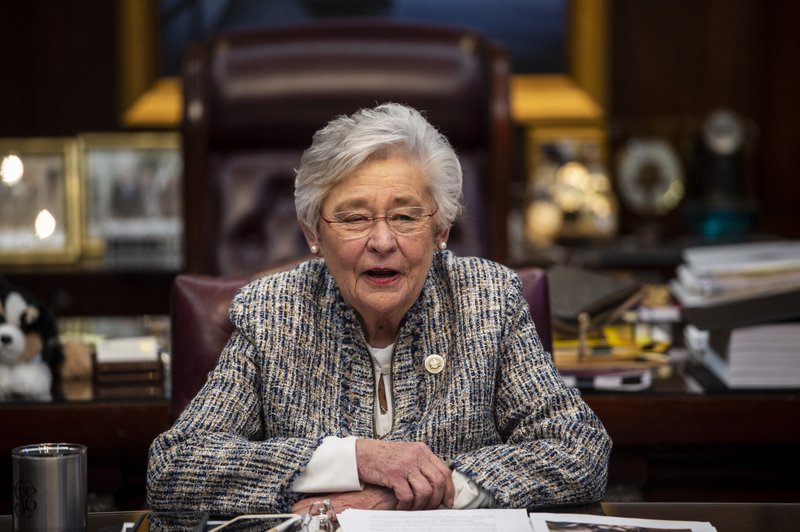
Gov. Kay Ivey has released a statement in light of schools dropping their remaining mask mandates. Ivey has drawn criticism on the issue, with many Alabamians arguing that she hasn’t been vocal enough about dropping mask mandates in schools sooner. In January, when the positivity rate for coronavirus tests exceeded 35% statewide, some state school systems returned to online learning or implemented mask restrictions to avoid classroom outbreaks. With the current omicron outbreak waning, schools are reversing mask mandates. “I applaud the Alabama schools and universities who have made the decision to end mask mandates. Given the health data we’ve seen in Alabama and across the country, I encourage all schools to continue removing these mandates — we don’t need them in Alabama,” Ivey stated. “As a former teacher, I know well that parents should be in charge of making the best decisions for their kids, not government. That’s why here in Alabama, we don’t have covid state government mandates — we sued President Biden over his mandates, and we won. I believe in the good people of our state and will always protect their freedoms.”
FDA halts use of antibody drugs that don’t work vs. omicron

COVID-19 antibody drugs from Regeneron and Eli Lilly should no longer be used because they don’t work against the omicron variant that now accounts for nearly all U.S. infections, U.S. health regulators said Monday. The Food and Drug Administration said it was revoking emergency authorization for both drugs, which were purchased by the federal government and have been administered to millions of Americans with COVID-19. If the drugs prove effective against future variants, the FDA said it could reauthorize their use. The regulatory move was expected because both drugmakers had said the infusion drugs are less able to target omicron due to its mutations. Still, the federal action could trigger pushback from some Republican governors who have continued promoting the drugs against the advice of health experts. Omicron’s resistance to the two leading monoclonal antibody medicines has upended the treatment playbook for COVID-19 in recent weeks. Doctors have alternate therapies to battle early COVID-19 cases, including two new antiviral pills from Pfizer and Merck, but both are in short supply. An antibody-drug from GlaxoSmithKline that remains effective also is in short supply. The drugs are laboratory-made versions of virus-blocking antibodies. They are intended to head off severe disease and death by supplying concentrated doses of one or two antibodies early in an infection. Then-President Donald Trump received Regeneron’s antibody combination after he tested positive for the coronavirus in 2020. The FDA noted in its decision that omicron accounts for more than 99% of U.S. infections, making it “highly unlikely” the antibodies would help people now seeking treatment. The agency said restricting their use would also eliminate unnecessary drug side effects, including allergic reactions. The U.S. government temporarily stopped distributing the two drugs in late December, as omicron was racing across the country to become the dominant variant. But officials resumed distribution after complaints from Republican governors, including Florida’s Ron DeSantis, who claimed that the drugs continued to help some omicron patients. DeSantis has heavily promoted antibody drugs as a signature part of his administration’s COVID-19 response, setting up infusion sites and lauding them at news conferences while opposing vaccine mandates and other public health measures. Texas Gov. Greg Abbott has also launched state-sponsored infusion sites. The drugs are not a substitute for vaccination and are generally reserved for people who are the most vulnerable, including seniors, transplant recipients, and those with conditions like heart disease and diabetes. Since early January, the U.S. government has shipped enough doses of the two antibodies to treat more than 300,000 patients. Both Regeneron and Lilly previously announced they were developing new antibodies that target omicron. The move comes days after regulators broadened the use of remdesivir — the first drug approved for COVID-19 — to treat more patients. On Friday, the FDA expanded the antiviral’s approval to include adults and children with early COVID-19 who face a high risk of ending up in the hospital. Remdesivir previously had been limited to hospitalized patients. An influential panel of federal experts had already recommended using the infused drug to try to head off hospitalization. The same guidelines from the National Institutes of Health panel recommend against the continued use of Lilly and Regeneron’s antibody drugs due to their reduced effectiveness against omicron. Still, many hospitals will face challenges in ramping up remdesivir treatments. The drug requires three consecutive IV infusions over three days when used for nonhospitalized patients. That time-consuming process won’t be an option for many over-capacity hospitals facing staff shortages. The FDA made its decision based on a 560-patient study that showed a nearly 90% reduction in hospitalizations when remdesivir is given within seven days of symptoms. The study predates the omicron variant, but, like other antivirals, remdesivir is expected to maintain its performance against the latest variant. Republished with the permission of the Associated Press.
COVID-19 and pregnancy: Women regret not getting the vaccine
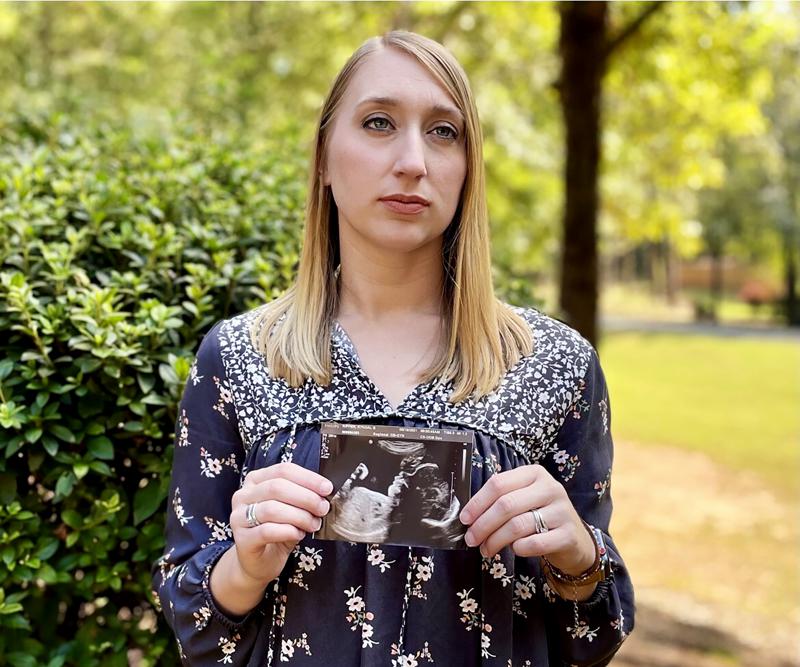
Sometimes when she’s feeding her infant daughter, Amanda Harrison is overcome with emotion and has to wipe away tears of gratitude. She is lucky to be here, holding her baby. Harrison was 29 weeks pregnant and unvaccinated when she got sick with COVID-19 in August. Her symptoms were mild at first, but she suddenly felt like she couldn’t breathe. Living in Phenix City, Alabama, she was intubated and flown to a hospital in Birmingham, where doctors delivered baby Lake two months early and put Harrison on life support. Kyndal Nipper, who hails from outside Columbus, Georgia, had only a brief bout with COVID-19 but a more tragic outcome. She was weeks away from giving birth in July when she lost her baby, a boy she and her husband planned to name Jack. Now Harrison and Nipper are sharing their stories in an attempt to persuade pregnant women to get COVID-19 vaccinations to protect themselves and their babies. Their warnings come amid a sharp increase in the number of severely ill pregnant women that led to 22 pregnant women dying from COVID in August, a one-month record. “We made a commitment that we would do anything in our power to educate and advocate for our boy because no other family should have to go through this,” Nipper said of herself and her husband. Harrison said she will “nicely argue to the bitter end” that pregnant women get vaccinated “because it could literally save your life.” Since the pandemic began, health officials have reported more than 125,000 cases and at least 161 deaths of pregnant women from COVID-19 in the U.S., according to the U.S. Centers for Disease Control and Prevention. And over the past several months, hospitals and doctors in virus hot spots have reported a sharp increase in the number of severely ill pregnant women. With just 31% of pregnant women nationwide vaccinated, the CDC issued an urgent advisory on Sept. 29 recommending that they get the shots. The agency cautioned that COVID-19 in pregnancy can cause preterm birth and other adverse outcomes and that stillbirths have been reported. Dr. Akila Subramaniam, an assistant professor in the maternal-fetal medicine division of the University of Alabama at Birmingham, said the hospital saw a marked rise in the number of critically ill pregnant women during July and August. She said a study there found the delta variant of COVID-19 is associated with increased rates of severe disease in pregnant women and increased rates of preterm birth. “Is it because the delta variant is just more infectious or is it because delta is more severe? I don’t think we know the answer to that,” Subramaniam said. When COVID-19 vaccines became available to pregnant women in their states this spring, both Harrison, 36, and Nipper, 29, decided to wait. The shots didn’t have final approval from the Food and Drug Administration and pregnant women weren’t included in studies that led to emergency authorization, so initial guidance stopped short of fully recommending vaccination for them. Pfizer shots received formal approval in August. The women live on opposite sides of the Alabama-Georgia line, an area that was hit hard by the delta variant this summer. While Harrison had to be put on life support, Nipper’s symptoms were more subtle. When she was eight months pregnant, she lost her sense of smell and developed a fever. The symptoms went away quickly, but Jack didn’t seem to be kicking as much as he had been. She tried drinking a caffeinated beverage: Nothing. She headed to the hospital in Columbus, Georgia, for fetal monitoring where medical staff delivered the news: Baby Jack was gone. “He was supposed to come into the world in three weeks or less,” Nipper said. “And for them to tell you there’s no heartbeat and there is no movement …” Nipper’s doctor, Timothy Villegas, said testing showed the placenta itself was infected with the virus and displayed patterns of inflammation similar to the lungs of people who died of COVID-19. The infection likely caused the baby’s death by affecting its ability to get oxygen and nutrients, Villegas said. The doctor said he has since learned of similar cases from other physicians. “We’re at that point where everybody is starting to raise some red flags,” he said. In west Alabama, Dr. Cheree Melton, a family medicine physician who specializes in obstetrics and teaches at the University of Alabama, said she and her colleagues have had about a half-dozen unvaccinated patients infected with COVID-19 lose unborn children to either miscarriages or stillbirth, a problem that worsened with delta’s spread. “It’s absolutely heartbreaking to tell a mom that she will never get to hold her living child,” she said. “We have had to do that very often, more so than I remember doing over the last couple of years.” Melton said she encourages every unvaccinated pregnant woman she treats to get the shots, but that many haven’t. She said rumors and misinformation have been a problem. “I get everything from, ‘Well, somebody told me that it may cause me to be infertile in the future to, ‘It may harm my baby,’” she said. Nipper said she wishes she had asked more questions about the vaccine. “Looking back, I know I did everything that I could have possibly done to give him a healthy life,” she said. “The only thing I didn’t do, and I’ll have to carry with me, is I didn’t get the vaccine.” Now home from the hospital with a healthy baby, Harrison says she feels profound gratitude — tempered with survivor’s guilt. “I cry all the time. Just little things. Feeding her or hugging my 4-year-old. Just the thought of them having to go through life without me and that’s a lot of people’s reality right now,” Harrison said. “It was very scary and it all could have been prevented if I had gotten a vaccination.” Republished with the permission of the Associated Press.
Jail releases some non-violent offenders because of COVID-19

A south Alabama jail has started releasing some non-violent offenders because of a rise in COVID-19 cases at the facility. WKRG-TV reports that Mobile County Metro Jail began Tuesday allowing some non-violent offenders to be released, similar to what is done when a hurricane threatens the facility or there is a desperate need for space in the jail. Inmates facing only city, non-violent charges are allowed to sign their own bond or be released on recognizance. There are a number of exceptions, including that the charges can’t be related to driving under the influence or domestic violence. “This past week and increasingly over the weekend we had an outburst of COVID infections in the jail and it was spreading really rapidly and so to really reduce the population as quickly as we could and also limit the number of people coming in and out of the jail,” Sheriff Sam Cochran said of the decision. Republished with the permission of the Associated Press.
Nearly 200 inmates test positive for COVID at Alabama prison
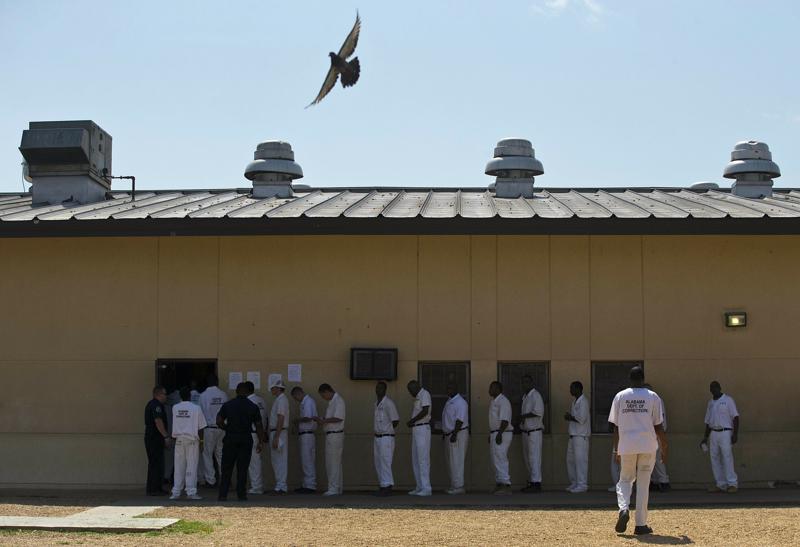
Nearly 200 inmates tested positive for COVID-19 at a state prison after officials implemented mass testing in the wake of an outbreak at the facility. The Alabama Department of Corrections said in a news release that all Elmore Correctional Facility inmates not currently exhibiting symptoms were tested last week. Out of the 960 asymptomatic inmates, 191 tested positive for COVID-19. Elmore is a medium-security prison that houses about 1,000 inmates. The prison system said the testing was done as a precautionary measure in response to a recent increase in cases at the prison. Since the pandemic began, 1,901 total cases of COVID-19 have been confirmed among inmates, and 224 of those remain active. Sixty-six inmates and three staff members have died, according to numbers provided by the prison system. The Alabama prison system suspended visitation during the pandemic and has not said when it will return. Alabama has seen a surge in COVID-19 cases fueled by the highly contagious delta variant and the state’s low vaccination rate. Case and hospitalization numbers are quickly approaching what they were at the winter peak of the pandemic. The number of hospitalized patients with COVID-19 was 2,723 on Tuesday, a figure that is nearing the previous peak of 3,087 patients on Jan. 12. There are now more patients needing intensive care than there are intensive care beds in the state. The state on Tuesday had 11 more patients in intensive care than the state had intensive care beds, according to Dr. Don Williamson, the former state health officer who now heads the Alabama Hospital Association. Many hospitals have implemented surge plans and are housing intensive care patients in other areas of the hospital. Republished with the permission of the Associated Press.
Calling bullsh*t on mask theatre would save lives
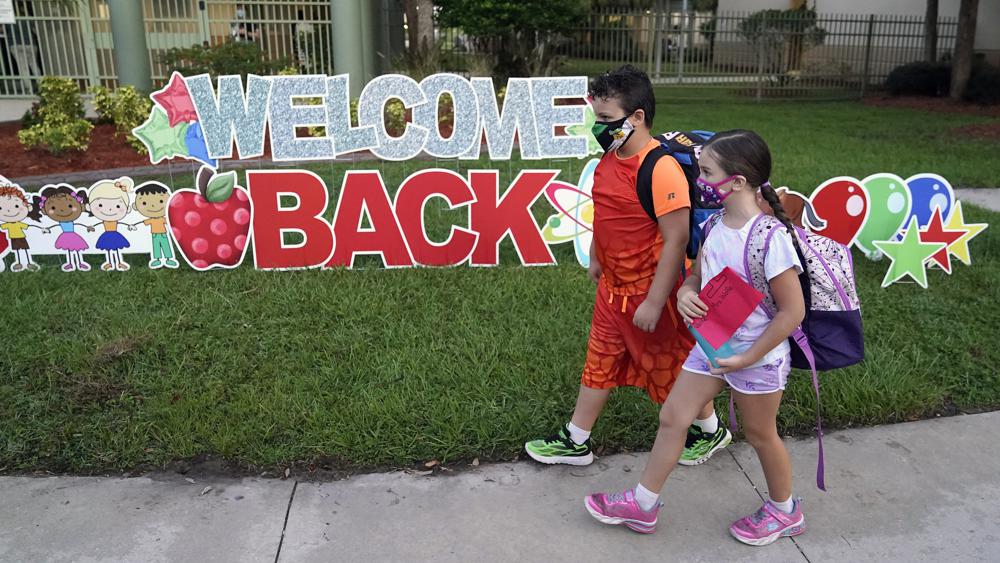
From Day 1 of COVID, I’ve focused on saving lives and protecting others. I don’t say this to toot my own horn; I say this because now, after a year and a half of supporting masks, flattening the curve, getting and promoting vaccinations, and pulling out masks again, there are people who are saying I want to kill kids. Some people believe that parents, teachers, and even elected officials who are discussing facts, peer-reviewed studies, and quoting doctors and researchers whose conclusions are contrary to the CDC and AAP are all conspiratorial COVID deniers. This is a stupid and harmful lie. Let me speak plainly for those confused: COVID is real. Vaccinations help protect against getting/spreading the virus and lessen the chances of death/hospitalization for someone who does get it. When worn properly by adults and older children (teens), Masks help the spread by limiting the percentage of respiratory droplets someone infected spreads. There is some value though it’s not as high for those wearing a mask if exposed to someone else. Seniors, preemies, people of all ages with underlying conditions such as obesity, heart or lung conditions, diabetes, or other immune system are at the greatest risk from COVID complications or death. Now back to the point at hand: Mask theatre is stupid and undermines the credibility of physicians and other medical experts who promote and support it. What qualifies as mask theatre you may well let me give you some examples: Masking as you walk to your table at a restaurant, only to get there, take it off and talk and eat for hours. Masking when walking or biking alone outdoors. Masking when in your car alone (extra points if the windows are down and double points if you’re a smoker masking between cigarettes). Masking in a home without someone sick or at high risk (extra points if you mask while watching t.v. then sleep next to someone unmasked). Masking when socially distancing outdoors under any circumstances that doesn’t involve an at-risk person. Worse than masking theatre is the fact that these guidelines or recommendations are harmful to those who want to take rational precautions. Starting today, my 2-year-old is being forced to mask. My other son has been masked since turning 3 and will start his kindergarten year in a mask, and my daughter went through second and is starting third in a mask. What’s worse? The health experts advising their school are requiring them to mask outdoors. I went to a kindergarten ‘meet the students’ playdate on a playground where children swinging, climbing, and sliding in 90 degree heat were forced to wear masks. I had to leave early because my son was overheated 20 minutes in. It took all I had not to shout at the adults in charge. Adults who I generally respect in a school I treasure. Children should be able to trust us as parents.Parents should be able to trust school officials.We all should be able to trust the medical community. WHO says masking under 5 is not recommended. When Governor Kay Ivey instituted a mask mandate, she and Dr. Scott Harris started it at 5. CDC and AAP have always said 2, but why? They’ve never once said why two. Not a single study supports the idea of toddlers being responsible for community spread. CDC reports that as of 08/07/2021 165 children in the nation under 14 have died of COVID. So tell me then why 2-5 year olds all over the state are being masked? Let me tell you. “Follow the science” has been lost to “following the guidance” and a system of peer pressure where doctors and parents alike have confided in me that they are scared to speak up to their peers or school administrators. Fear that is grounded in a world where those of us opposed to masking children are being accused of being selfish, reckless or even as bad as segregationist. So our toddlers and young children pay the price wearing masks except when they snack, eat lunch, nap/rest, snack again. What is gained in terms of protection that isn’t lost when they are in downtime? Nothing. It’s illogical, inhuman, and unscientific to think there will be no talking (or breathing) during these breaks or nap times. Masking any children outdoors is also ridiculous. Every life is precious but, and yes, I too can hardly believe I’m adding a “but” here, but we should not upturn healthy young children’s lives for a virus that, for the overwhelming majority, will be mild and not as deadly as the flu. Wait, did I just deny the deadly nature of COVID? No. I didn’t. Reread my statement. I want experts to follow the science. Beyond COVID, the costs of masking are high. The social and emotional costs of teaching our children to live in fear, having them miss years of developmental speech skills, the general risk to the immune system (hello, summer RSV), and childhood are high too high to be silent about. So what’s the right age to mask? Now that’s a topic I’d like to hear the data parsed out on. Not “just because they can talk, they can catch/spread COVID.” Actual, risk/costs and don’t tell me comfort and convenience are the only costs with a straight face. Most spread is happening within families and at home. I’m still waiting for one piece of evidence of swing set spread. Families need to consider their children, loved ones, and individual risk and make informed decisions. That choice shouldn’t be made for everyone by “experts” who refuse to acknowledge data, statistics, and risk factors. Protecting and keeping my children safe is my number one priority, but we can’t keep them alive at the cost of not letting them live. This is an opinion piece by Apryl Marie Fogel. Fogel is the editor and publisher of Alabama Today. She is the host of Straight Talk with Apryl Marie on News Talk 93.1 Radio on air 12pm-3pm central.
Alabama cities canceling Christmas parades as pandemic rages

Part of the holiday season will be missing in some Alabama cities this year as officials cancel Christmas parades because of the coronavirus pandemic. The cities of Birmingham and Anniston called off their parades in recent days as caseloads and hospitalizations increase across the state. The cities of Bessemer, Gadsden, and Madison were among those that previously called off their Christmas parades citing safety concerns over the virus. Some places are still planning events like tree lightings that residents can watch online, and other places are creating alternative events. Hartselle plans a contest in which residents can compete for prizes by decorating their homes. Tuscaloosa announced a “reverse” parade in which people can stay in their cars and drive past decorated floats in a park, but organizers canceled it citing low participation. Cases of COVID-19 are increasing rapidly across the state as a new wave of illness sweeps across much of the nation. Republished with the permission of the Associated Press.
Johnny Gryll’s II restaurant defiant over mask mandate, banning health officials and Governor Kay Ivey

Johnny Gryll’s II restaurant has posted on Facebook that they are banning certain Huntsville city officials and the governor of Alabama in apparent defiance of the new mask mandate. Governor Kay Ivey issued the order, and it goes into effect starting at 5 pm, July 16. The ban includes Madison County health officials Dr. Karen Landers and Dr. Scott Harris, Huntsville Mayor Tommy Battle, Madison Mayor Paul Finley, Madison County Commission Chair Dale Strong, and the governor of Alabama, Kay Ivey. The post states that the ban is in response to the mask mandate, saying, “These orders create unnecessary stress, liability, and physical, mental and financial burdens on the restaurant and its employees.” One Facebook comment by Jarvis Lampley stated, “I’ve been at your establishment TWICE and never spending another dime there. This is the most selfish, careless thing I have seen yet. There are many places in this city that are 10 times better and care about the safety of its employees and the public. Enjoy your shutdown.” Paul Bull commented, “I’ll ban myself, masks save lives.” In contrast to that is a comment that came from Tim Jensen, who stated, “That’s what I’m talking about, got my support. Always loved the food and service, very fun staff as well that always seem to be in a good mood.” Johnny Gryll’s II is a restaurant in Huntsville, Alabama, and is owned by Mike Heffelfinger.


